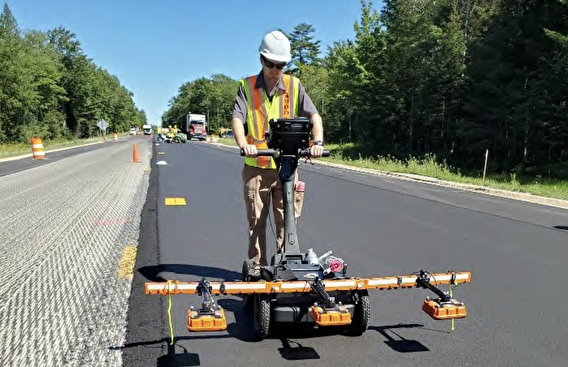Local transportation agencies generally pave one lane of road at a time to keep traffic moving. Phased paving, however, creates joints in between the lanes that can crack and deteriorate. A recent LRRB-funded research project produced tools and recommendations to avoid significant maintenance expenditures for these joints.

Previous studies have found that insufficiently dense asphalt is often the cause of centerline joints. Measuring density along a stretch of pavement can be costly, however, and it has not been a widespread practice.
The researchers confirmed that pavement density is one of the most important factors in longitudinal joint strength. For determining pavement density, they focused on the density profiling system (DPS), a nondestructive method that uses ground penetrating radar. They found that DPS can provide broad coverage and give real-time feedback during construction.
Based on the DPS analysis, researchers proposed a longitudinal joint quality index. With this tool, quick density measurements could support better construction quality or repair processes—and stronger, longer-lasting pavement.
Learn more: